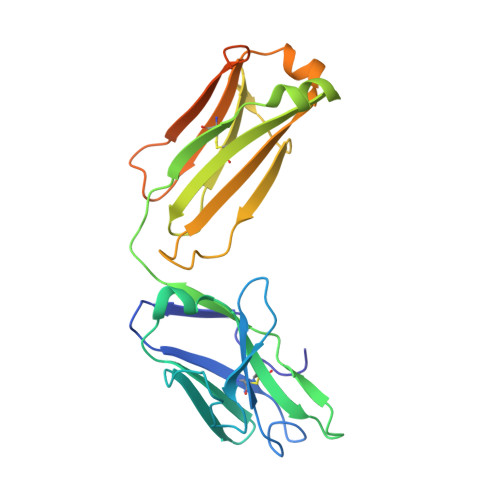Multiscale computation delivers organophosphorus reactivity and stereoselectivity to immunoglobulin scavengers.
Mokrushina, Y.A., Golovin, A.V., Smirnov, I.V., Chatziefthimiou, S.D., Stepanova, A.V., Bobik, T.V., Zalevsky, A.O., Zlobin, A.S., Konovalov, K.A., Terekhov, S.S., Stepanov, A.V., Pipiya, S.O., Shamborant, O.G., Round, E., Belogurov Jr., A.A., Bourenkov, G., Makarov, A.A., Wilmanns, M., Xie, J., Blackburn, G.M., Gabibov, A.G., Lerner, R.A.(2020) Proc Natl Acad Sci U S A
- PubMed: 32859757
- DOI: https://doi.org/10.1073/pnas.2010317117
- Primary Citation of Related Structures:
5TJD, 6Y1K, 6Y1L, 6Y1M, 6Y1N, 6Y49 - PubMed Abstract:
Quantum mechanics/molecular mechanics (QM/MM) maturation of an immunoglobulin (Ig) powered by supercomputation delivers novel functionality to this catalytic template and facilitates artificial evolution of biocatalysts. We here employ density functional theory-based (DFT-b) tight binding and funnel metadynamics to advance our earlier QM/MM maturation of A17 Ig-paraoxonase (WTIgP) as a reactibody for organophosphorus toxins. It enables regulation of biocatalytic activity for tyrosine nucleophilic attack on phosphorus. The single amino acid substitution l-Leu47Lys results in 340-fold enhanced reactivity for paraoxon. The computed ground-state complex shows substrate-induced ionization of the nucleophilic l-Tyr37, now H-bonded to l-Lys47, resulting from repositioning of l-Lys47. Multiple antibody structural homologs, selected by phenylphosphonate covalent capture, show contrasting enantioselectivities for a P-chiral phenylphosphonate toxin. That is defined by crystallographic analysis of phenylphosphonylated reaction products for antibodies A5 and WTIgP. DFT-b analysis using QM regions based on these structures identifies transition states for the favored and disfavored reactions with surprising results. This stereoselection analysis is extended by funnel metadynamics to a range of WTIgP variants whose predicted stereoselectivity is endorsed by experimental analysis. The algorithms used here offer prospects for tailored design of highly evolved, genetically encoded organophosphorus scavengers and for broader functionalities of members of the Ig superfamily, including cell surface-exposed receptors.
Organizational Affiliation:
Shemyakin-Ovchinnikov Institute of Bioorganic Chemistry, Russian Academy of Sciences, 117997 Moscow, Russian Federation.



















